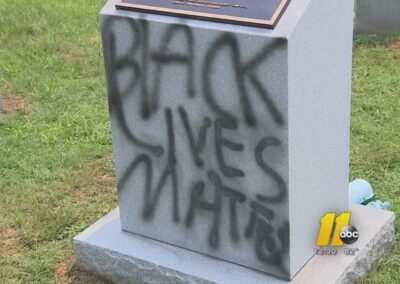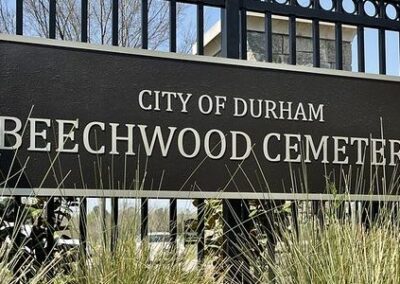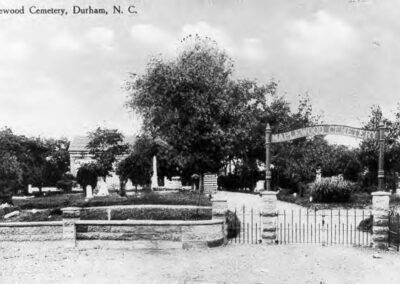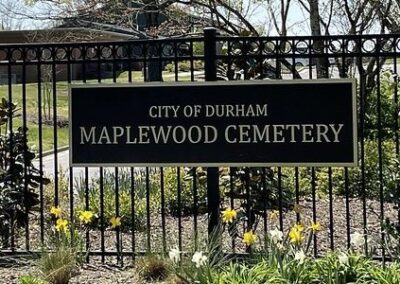This is a story about how green burial can be part of a solution to address city planning challenges. It’s a case study unfolding right now in Durham, North Carolina. The story is told by Erica Xavier-Beauvoir. I met Erica in the Green Burial Council’s ‘Green Burial Masterclass’ and we spoke over Zoom for this story.
Durham has a pretty complex and dynamic set of challenges facing the city. We’ll talk more about that in a minute. But how did Erica get involved? Here’s Erica providing some important context about what is happening and why, including the goals of the project.
Land Use Challenges facing the City of Durham
FUSE is a non-profit organization that we’ll talk more about below. Here’s how the FUSE website describes the challenges facing Durham:
Durham’s segregated past resulted in the creation of two public cemeteries: Maplewood (historically white with identified Confederate graves) and Beechwood (historically Black). Beechwood is running out of space; with limited availability for traditional burials. Given the history of segregation and the generations of families that are already buried in Beechwood, many Black Durham residents are hesitant to transition to Maplewood. This could force Black residents to use private cemeteries instead, which would cost more than three times what white residents pay at the public Maplewood. At the same time, traditional burials are expensive, take up a lot of space to the exclusion of other uses, and have a negative impact on the environment. Climate change also exacerbates the environmental impact of cemeteries, as flooding and erosion can disintegrate coffins, inflicting physical, environmental, and emotional damage on the surrounding area.
A quick Google search brings up several news stories about the Maplewood and Beechwood cemeteries. Here’s one of them.
Introducing Green Burial as a Sustainable Land Use Strategy
Where to begin? That question is where most conversations like this stop. In this case, a critical partnership helped get things moving for the city of Durham.
FUSE is a national nonprofit dedicated to increasing the capacity of local governments to engage communities, advance racial equity, and work more effectively for everyone. We believe, as communities adapt to constantly evolving challenges, that economic advancement and narrowing racial disparities is not only possible, but achievable.
Erica is an Executive Fellow with FUSE. Here’s more about how that opportunity came together.
The work Erica is doing in Durham is creative, interesting, and unique – but I think it’s a model that could be used successfully in many other places. I think we can change that by educating and pitching sustainable land use solutions, including green burial, to city officials.
Here’s Erica’s advice about who you can talk to in your city or local government:
When you find the people within your local government who care about these issues and might be willing to help implement green burial solutions, here are some ideas for how to structure your pitch.
Calls to Action: Education & Intentionality
I met Erica through the Green Burial Council’s “Green Burial Masterclass”; it’s a course designed for people implementing green burial practices for themselves or others. Here are some ways that course helped Erica move this project forward.
Here are Erica’s calls-to-action for you as we close out the story.
Resources for digging deeper
I hope this case study inspires you to act and learn more. Here are some links to topics Erica discussed in this case study. As always, we’d love to hear from you about projects you are working on to improve the options available at the end of our lives.





